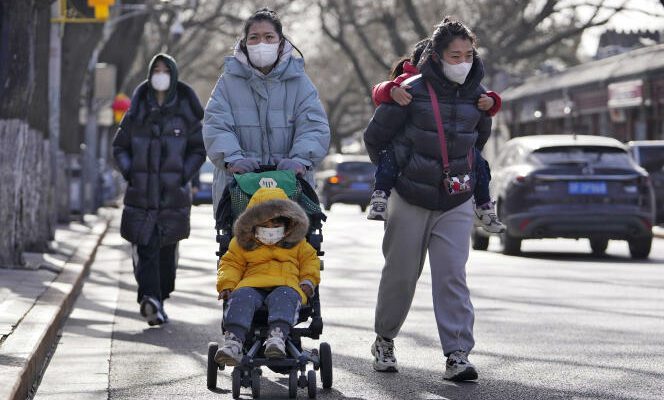This is a historic shift. In 2022, the Chinese population has officially decreased. According to published data, Tuesday, January 17, there were, at the end of the year, 1.411.750 billion Chinese (not counting Hong Kong, Macau or foreigners living in China), 850,000 less than at the end of 2021. Unheard of since the early 1960s and the ravages of famine and the policy of the Great Leap Forward which, according to some demographers, would have cost the lives of 30 million people, far more than what recognize the authorities.
There were about 540 million Chinese when the Communists came to power in 1949, and the billion mark was crossed in 1982, exactly forty years ago. However, due to the low birth rate, China’s population is expected to decline rapidly. According to the UN, it would this time drop below one billion in 2078, and there would only be 672 million Chinese at the end of the 21st century.e century, less than India but also, according to some forecasts, than Nigeria.
In 2022, there were only 9.56 million births in the Middle Kingdom, a birth rate of 6.77 per 1,000 inhabitants. In addition, the country recorded 10.41 million deaths, or 7.37 per 1,000 inhabitants. For comparison, in 2021 there were 10.62 million births (7.52 per 1,000 inhabitants) and 10.14 million deaths (7.18 per 1,000 inhabitants). The natural growth rate, which was therefore slightly positive in 2021 (+0.34 per 1,000) became negative (–0.60 per 1,000) in 2022.
Moreover, there are still more men than women, with a ratio of 104 percent, the difference being particularly visible in certain campaigns. Added to this is the fact that the population is aging. For the first time in 2021, life expectancy (78.2 years) even exceeded that of the United States, which fell to 76.6 years. It remains to be seen if the current Covid-19 epidemic changes the situation.
“Young people no longer dare to consume or have children”
While the one-child policy implemented by the authorities from 1979 to 2015 partly explains this “grandpa-boom” and the ensuing demographic decline, they are unable to reverse the trend. However, measures in favor of a family policy are multiplying, both at national and local level. The city of Shenzhen has just announced that aid for families with three children could amount to 19,000 yuan (about 2,600 euros).
You have 29.67% of this article left to read. The following is for subscribers only.
